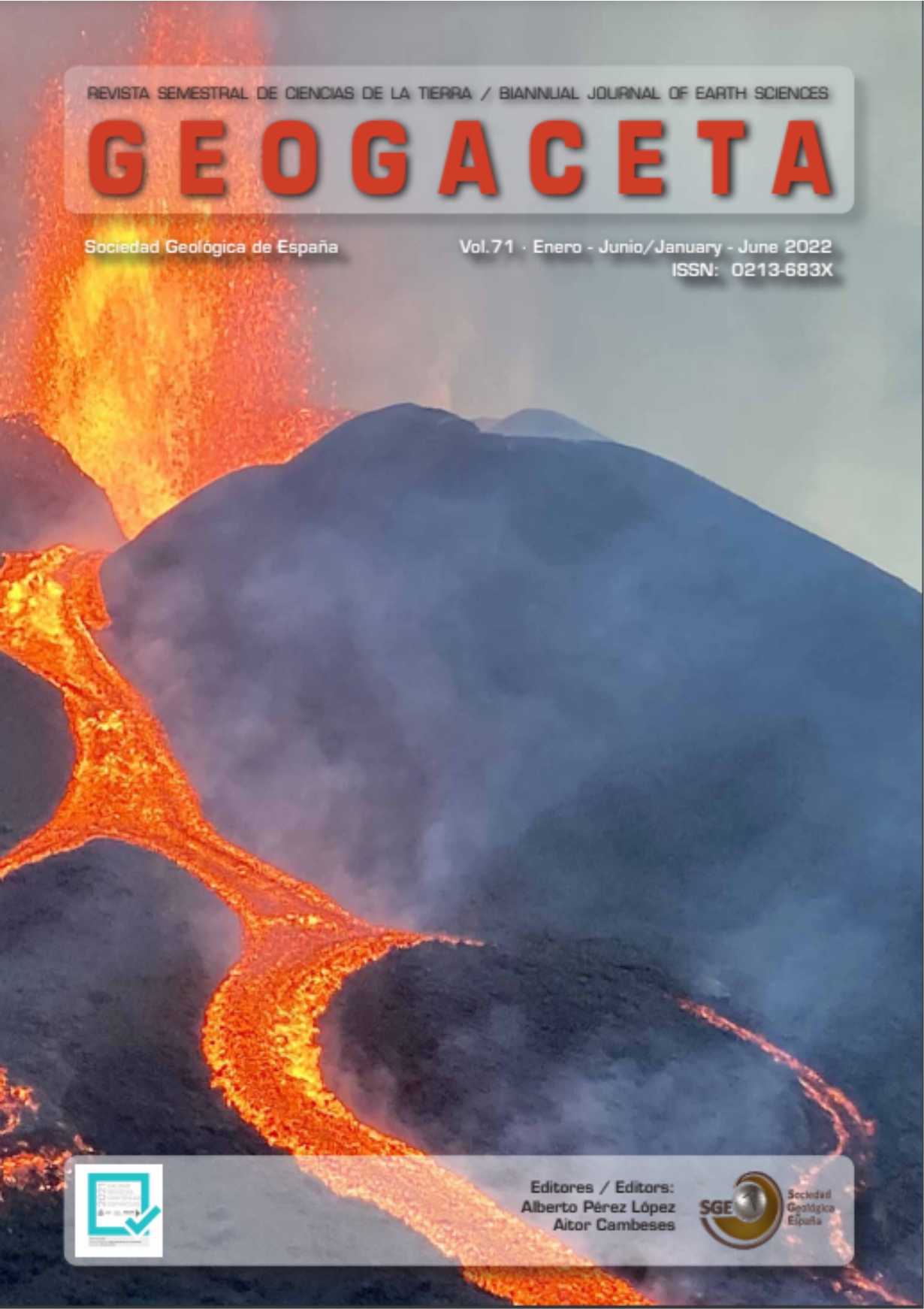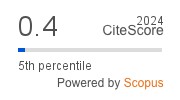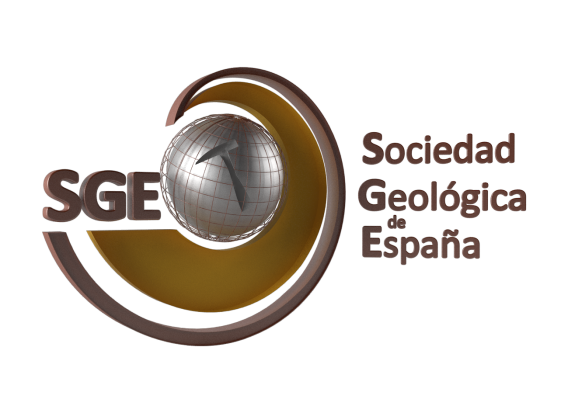Colonización de los foraminíferos bentónicos de la playa artificial de Ostende (Castro Urdiales, Cantabria)
DOI:
https://doi.org/10.55407/geogaceta99576Palabras clave:
colonización, playa artificial, Cantabria, Golfo de Vizcaya, foraminíferos bentónicosResumen
Un total de 48 especies de foraminíferos bentónicos, 31 de ellas vivas han sido extraídas de la playa artificial de Ostende (Castro Urdiales, Cantabria). Las especies más abundantes son: Cibicidoides lobatulus y Cibicides refulgens acompañadas de Elphidium crispum y Rosalina globularis. Todas ellas son especies epifaunales marinas costeras y de plataforma. Esta microfauna ha colonizado la playa artificial de Ostende 30 años después de que fuera construida a partir de un vertido de grava que destruyó la Ensenada natural de Urdiales. Este retraso en la colonización parece ser debido al tipo de sedimento con el que se rellenó la ensenada. La asociación dominante de foraminíferos, muy similar a la de otras playas naturales cercanas, pone de manifiesto la transformación de la playa artificial de Ostende en una playa consolidada de “tipo bolsillo”. Sin embargo, la falta de ejemplares de foraminíferos bentónicos eurihalinos señala la pérdida definitiva de los ecosistemas transicionales, como la marisma, que existía en la ensenada de Urdiales antes de su relleno.
Citas
Alve, E. (1999). Earth-Science Reviews, 46,167-185. https://doi.org/10.1016/S0012-8252(99)00016-1
Buzas, M.A. (1993). Journal of Foraminiferal Research 23 (3), 156-161. https://doi.org/10.2113/gsjfr.23.3.156
Cearreta, A. (1989). Revista Española de Micropaleontología XXI (1), 67-80.
Collen, J. (1996). Journal of Micropalaeontology 15, 130. https://doi.org/10.1144/jm.15.2.130
Debenay, J.P., Della Patrona, L. y Goguenheim, H. (2009). Journal of Foraminiferal Research 39 (4), 249-266. https://doi.org/10.2113/gsjfr.39.4.249
Duros P., Silva Jacinto R., Dennielou B., Schmidt S., Martinez Lamas R., Gautier E., Roubi A. y Gayet N. (2017). Deep Sea Research Part I: Oceanographic Research Papers 120, 61-75.
Elorza, J. (2021). Revista de la Sociedad Geológica de España 34 (1), 25-35. https://doi.org/10.55407/rsge.94880
Elorza, J. e Higuera-Ruiz, R. (2016). Revista de la Sociedad Geológica de España 29 (2), 3-22.
Elorza, J. e Higuera-Ruiz, R. y Pascual, A. (2019). Revista de la Sociedad Geológica de España 32 (1), 3-24.
Hayward, B.W., Le Coze, F., Vachard, D. y Gross, O. (2021). World Foraminifera Database. Accessed at http://www.marinespecies.org/foraminifera on 2021-07-01.
Loeblich, A.R. y Tappan, H. (1988). Foraminiferal genera and their classification. Van Nostrand Reinhold, New York, 970 p. https://doi.org/10.1007/978-1-4899-5760-3
Murray, J.W. (2006). Ecology and Applications of Benthic Foraminifera, Cambridge University Press, Cambridge, 426 p. https://doi.org/10.1017/CBO9780511535529
Ordiales, A., Martínez-García, B. y Mendicoa, J. (2017). Geogaceta 61, 131-134. Pascual, A., Martínez-García, B. y Mendicoa, J. (2019). Geogaceta 66, 71-74.
Ramírez del Pozo, J., Portero García, J.M., Olivé Davó, A., Martín Alafont, J.M., Aguilar Tomás y Giannini, G. (1982). Mapa Geológico de España 1:50.000, hoja nº 36 Castro Urdiales) y memoria. IGME. 31 p.
Rosales, I. (1999). Journal of Sedimentary Research 69, 447-465. https://doi.org/10.2110/jsr.69.447
Rouvillois, A. (1970). Revue de Micropaléontologie 13 (3), 188-204.
Descargas
Publicado
Cómo citar
Número
Sección
Licencia
Hasta el año 2023 el autor/a cedía el copyright (“derechos de autor”) a la Sociedad Geológica de España, pero desde el 2024 el/la autor/a conserva los derechos de autor y concede a la Sociedad Geológica de España el derecho de la primera publicación y de manera no exclusiva cede la distribución de cada artículo en todos los soportes actuales o futuros, al mismo tiempo que ceden, también de manera no exclusiva, los derechos comerciales para la distribución de la versión impresa de Geogaceta. Por otra parte, los artículos, a partir del año 2023, están disponibles simultáneamente a su publicación, bajo la licencia Creative Commons CC BY-NC-SA 4.0, que permite copiar, transformar el trabajo, pero si se distribuye transformándolo, el nuevo trabajo debe distribuirse bajo la misma licencia, y nunca con propósitos comerciales, al tiempo que se reconoce la autoría y la publicación original en GEOGACETA, de tal manera que el único rol del copyright es dar a los autores el control sobre la integridad de sus trabajos y el derecho de ser adecuadamente reconocidos y citados.









